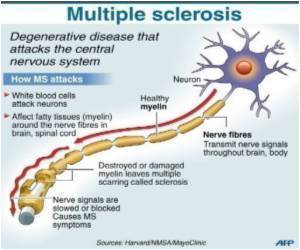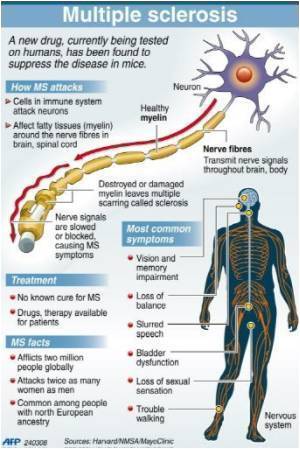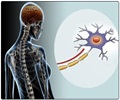A new study has helped scientists solve one of the many puzzling areas of multiple sclerosis.

The findings have provided fresh insights into the mechanisms underlying MS and suggest a novel target for therapeutic intervention.
"We've discovered a new target that could be efficacious. This particular pathway or ion channel is a key player in this disease, and we think that manipulating it could have a huge benefit for people suffering from MS," said Terrence J. Sejnowski of the Howard Hughes Medical Institute, who led the study.
Multiple sclerosis is a chronic, often disabling disease that attacks the central nervous system; it is responsible for a baffling range of neurological symptoms, including numbness, tingling, muscle weakness, paralysis, and vision loss.
It is thought to result when the immune system attacks the myelin sheath that insulates axons, the nerve fibres that conduct electrical impulses to and from the brain and between neurons within the brain.
Ordinarily, the myelin speeds up the signals the axons transmit, called action potentials.
Advertisement
The first computer model of axonal transmission, developed in the 1950s for the giant axon of the squid, which lacks myelin, tracked positively charged sodium and potassium ions, whose movements across the neuronal membrane generate the necessary electrical signals.
Advertisement
"It's been known for a long time that the two most important ions in the axon are sodium and potassium. What we did was use a program that can model every part of the axon by breaking it into little segments so we could we keep track of the ions going in and out of each segment. And what we found really surprised us," said Sejnowski.
The vast majority of prior clinical studies had focused on the sodium channel, which is responsible for initiating the action potential, and many of the targets for MS drugs likewise focus on the sodium channel.
While enhancing the sodium current did boost the signal in Sejnowki's model, it was the ratio of densities between the sodium channel and a previously ignored but ubiquitous voltage-insensitive potassium current called the leak current, which sets the ground state of the neuron, that determines whether neurons can fire properly.
If the sodium level drops, an accompanying drop in the leak current will maintain the signal, whereas if the sodium drops but the leak current doesn't, signal transmission may fail.
Conversely, if the sodium level is too high and the leak current doesn't increase, a patient may experience twitching. The "safe" zone lies between the two limits.
The findings were reported in the Proceedings of the National Academy of Sciences (PNAS).
Source-ANI














